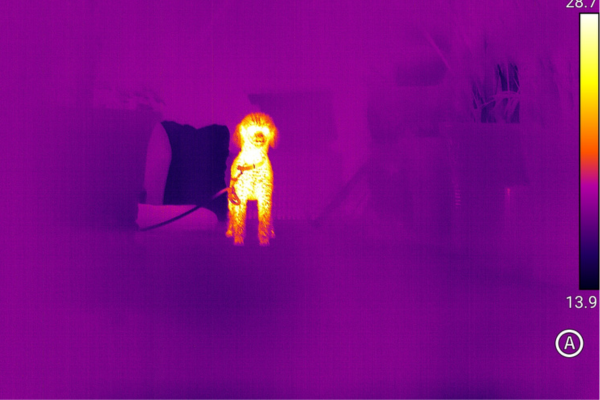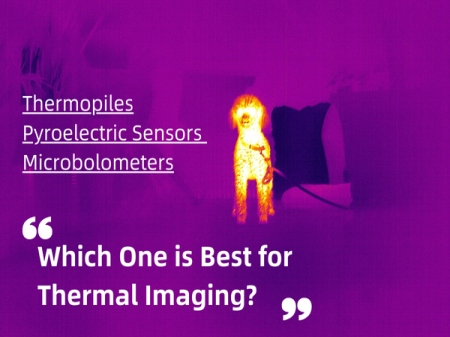According to the working principle, operation temperature, and other factors, there are two different types of thermal detectors, uncooled thermal detector and cooled thermal detector. Cooled thermal detectors work by photoelectric effect. Unlike cooled detector, uncooled thermal detectors firstly transfer infrared radiation into thermal energy, causing the rising temperature of sensitive materials and contributed to some parameters changes, and end up with intuitive signal. Thermopiles, pyroelectric sensors, and microbolometers are the most common types of uncooled detectors. Each one works in a different way, has its own pros and cons. You might be curious about the differences between Thermopiles, Pyroelectric sensors, and Microbolometers, and which one is the best for thermal imaging. Let's find out the answer.

What Are Thermopiles?
Thermopiles are made of many thermocouples. These are small devices that make electricity when there is a difference in temperature. This happens because of the Seebeck effect. Thermopiles increase this electricity by connecting many thermocouples together. This makes them good at finding infrared radiation.
Thermopiles are cheap, use little power, and last a long time. Their design is simple and works well in many conditions. However, thermopiles have lower resolution and respond slower than other sensors. They are not the best for detailed thermal images.
Exploring Pyroelectric Sensors
Pyroelectric sensors work using the pyroelectric effect. This means they create electricity when their temperature changes. They need regular changes in temperature to work. This can happen when they detect movement or when a device makes the temperature change.
Pyroelectric sensors are very sensitive and good for finding movement or changes in temperature. These sensors need steady surroundings to work well. They are not as good for taking thermal images that stay the same over time.
Decoding Microbolometers
Microbolometers are advanced infrared sensors. They work by measuring how heat changes the resistance in certain materials. By using many small detectors arranged in a grid, microbolometers work quickly, and can create detailed thermal images all the time instead of moving parts to work. The application fields of this kind of sensor is relative broader, which can be found in security monitoring, agriculture, medical care, aiot, scientific research, and so on.
Which One is Best for Thermal Imaging?
Among thermopiles, pyroelectric sensors, and microbolometers, microbolometers stand out as the best for thermal imaging. They offer smaller pixel sizes, higher resolution, and superior sensitivity compared to the other two. While they come at a higher cost, their ability to produce detailed and accurate thermal images makes them ideal for applications like fire rescue, large-scale temperature measurement, and so on. Each type has its strengths, but for advanced imaging needs, microbolometers are unmatched.










